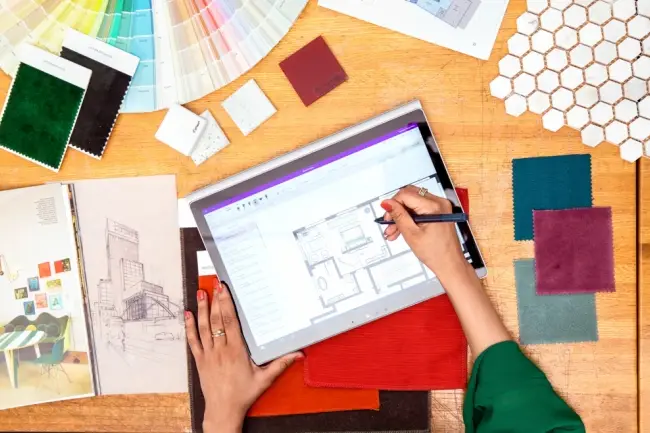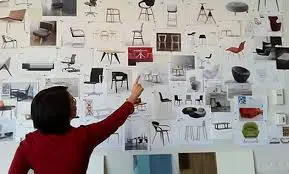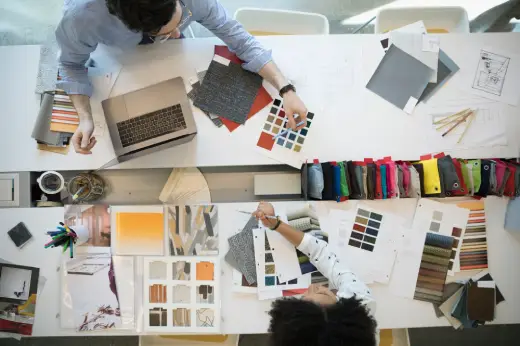It’s the practice of planning and designing indoor spaces to make them visually appealing, efficient, and aligned with client needs.
From choosing color schemes to coordinating structural layouts and decor, interior designers handle every element of spatial transformation.
Modern tools like 3D modeling and virtual walkthroughs help designers communicate ideas effectively and increase client satisfaction.
Interior design involves six major phases—Programming, Concept Development, Presentation, Documentation, Execution, and Evaluation.
With growing demand across residential, commercial, and luxury sectors, trained interior designers have vast career opportunities both freelance and with firms.
What exactly is Interior Designing?And how vast is the interior industry, especially in India? This blog explains multiple roles involved in interior designing and what kind of specialisation one can choose to build their career. Do not get confused with all the fancy terms. Read the blog to get a good understanding of the art, science and chemistry behind interior designing.
Interior design is for passionate and artistic people wanting to create a healthy pleasing environment for the people using the space. The profession requires a mix of creative and technical skills. There are various types of Interior design courses available in India which can be done, both online and offline.
Interior designing course is all about making interior spaces more lucrative. A professional interior designer goes through learning modules to implement and organise the area with proper structure, colour schemes, furnishings and decorations. All the techniques and worldly knowledge of interior designing are taught in the interior designing courses.
 What Is The Role Of an Interior Designer?
What Is The Role Of an Interior Designer?It creates indoor spaces that satisfy the client’s needs for aesthetics, safety and function. The role of an interior designer is to create a variety of areas through the use of furniture placement, colour palettes, decorations, and functional decor. From designing the living rooms and offices, the clients range from exclusive homeowners to large corporations. To contribute and satisfy a client’s needs, interior designer has to tap into elements such as artwork, lighting, window treatments and flooring.
To suit the furniture & interior look of the space, interior designer requires a perfect choice of elements to complete the overall look. An interior designer can work with a firm or can independently work as a contractor by building a client base of his own. To build a positive reputation in the industry and secure future work he or she must prove to excel in the quality of work. Check roles of Interior Designer.
 What Is The Purpose Of Interior Design?
What Is The Purpose Of Interior Design?An interior designer creates aesthetic rooms and spaces for the clients he is working with. The main purpose of an interior designer is to create spaces that are attractive yet functional. No matter the size, every interior designer must focus on creating the spaces safe while meeting the specific needs of the client. The work ranges from simple indoor and outdoor home environments to hotel lobbies and lavish mansions. Thus an interior designer comes in the picture to solve all the complications in space designing.
 What is the design methodology applied in Interior Design?
What is the design methodology applied in Interior Design?An interior design rendering is a 3D scaled drawing of the proposed design. The purpose of the rendering is to give clients an accurate picture of what is possible and how the finished product will look like. The client can then approve the design or ask for changes, if any. With other methods and techniques of interior design, rendering is also an important planning tool for designers.
The tool lets you know what elements such as structural components, furniture and appliances will be placed in the space and exactly what the size, shape and function of that element is. Renderings offer clients value as it helps the clients to understand the design effectively. To have a better vision of what the real finished space will look like, clients can take a virtual walkthrough of the space with a digital interior rendering. 3D models help the interior designers to effectively communicate designs to their clients which in return increases the possibility of approval. Rendering is a potent tool for visualisation of the future outlook of the space, which also shifts the control in the hands of clients, enabling them to alter or transform the design space.
Interior designing consists of a systematic progression with a logical series of steps to solve the design process of the clients. The processes applied n every interior design project are –
Problem statement Research Programme document Client review and approval
Ideation stage Concept statement with schematics
Design concept statement Cost estimates for the project Time frame and a proposed completion date
The Post-Occupancy Evaluation (POE) is an important final step in the design process.
The future step from 3D modelling would be to experience with walkthroughs. A walkthrough is not just a snapshot of the outlook of the building’s exterior and interior. It is a real-life representation through photorealistic objects, characters and animations. With the help of walkthroughs, one can experience a tangible final product of a design model. Virtual reality is created to include all the minutest details of the space through realistic design rendering. Clients can now easily feel, experience and examine the model internally, with the help of the walkthrough technique in interior design.
To know more about interior designing courses subjects, indluding bdes interior and PG in interior , curriculum, etc. visit our website NIF Pune Kothrud You May
Also Like: Can I do a part-time Interior Designer Course?
Interior design is the art and science of enhancing the interior of a space to make it more functional, aesthetically pleasing, and aligned with user needs.
An interior designer creates layouts, selects furniture, lighting, and materials, and coordinates with clients and vendors to bring a design vision to life.
Designers use software like AutoCAD, SketchUp, 3D rendering, and VR walkthroughs to visualize and present their work effectively.
The process includes programming, concept development, design presentation, documentation, execution, and final evaluation (POE).
With over 5 years of experience in Interior Design, Gauri Madane specialize in crafting innovative and functional spaces that reflect both style and practicality. Her passion for design is matched by her love for teaching, where she has the privilege of mentoring the next generation of creative professionals. Combining hands-on expertise with a commitment to education, Gauri strive to inspire and elevate both her projects and students.
